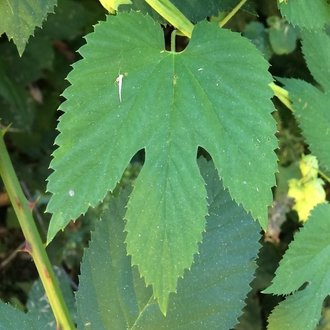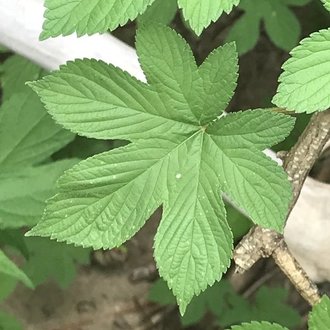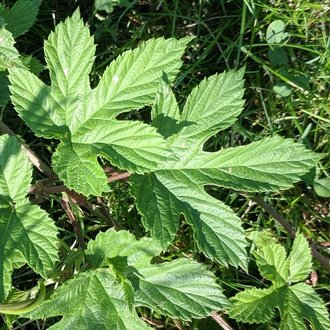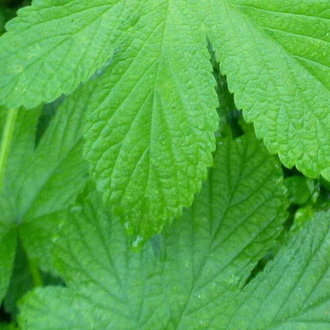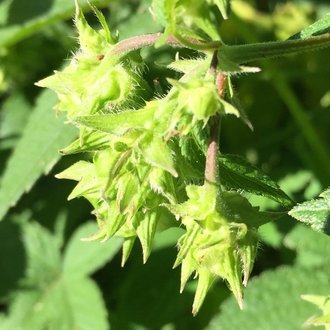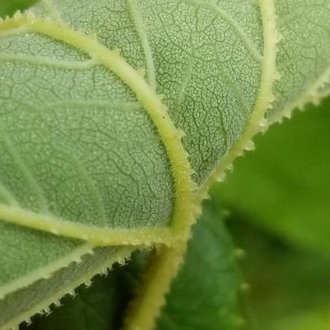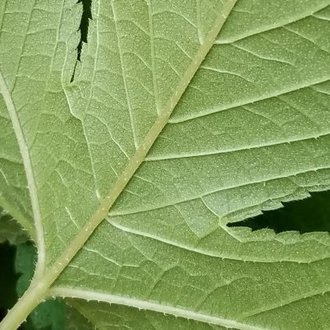Common Hop vs Japanese Hop
These two closely-related vining plants are similar in appearance and easily confused. They are usually easily distinguished by differences in their leaves, and even more easily by fruits. Although it is more difficult to see, they can also be distinguished by the glandularity of leaves and bracts.
Common Hop (Humulus lupulus) | Japanese Hop (Humulus japonicus) |
A perennial vine best-known for its use in flavoring beer. | An annual vine native to east Asia, invasive at numerous locations across eastern North America, especially in the northeast. |
Leaves usually 3-lobed, occasionally 5-lobed or unlobed, rarely more than 5 lobes. Photo © deboas, CC BY 4.0. | Leaves usually have 5-7 lobes, rarely 3 or 9. Photo © jeffreyaewick, Public Domain. |
Sinuses between lobes are usually rounded. Photo © Alison Northup, CC BY 4.0. | Sinuses between lobes usually end at an acute angle. Photo © Ira Gershenhorn, Public Domain. |
Fruit concealed by overlapping bracts (leaf-like structures) on fruiting spikes, making the spike look more rounded and conelike. Inflorescence bracts enclose 2 fruits each. Photo © Spencer, CC BY 4.0. | Bracts of fruiting spikes curl outward, leaving fruit visible, and making the spike as a whole look more sharp-pointed. Each bract encloses only one fruit. Photo © David, CC BY-SA 4.0. |
Leaves and inflorescence bracts glandular (dotted with tiny, oil-producing glands.) Photo © Jennifer Ogle, CC BY 4.0. | Leaves and inflorescence bracts not glandular. Photo © lotteryd, Public Domain. |
References & External Resources
These short lists show only links helpful for ID. For a complete list of references and resources also covering other aspects of ecology, visit the links section of the full article on each plant, which is the first entry here.



